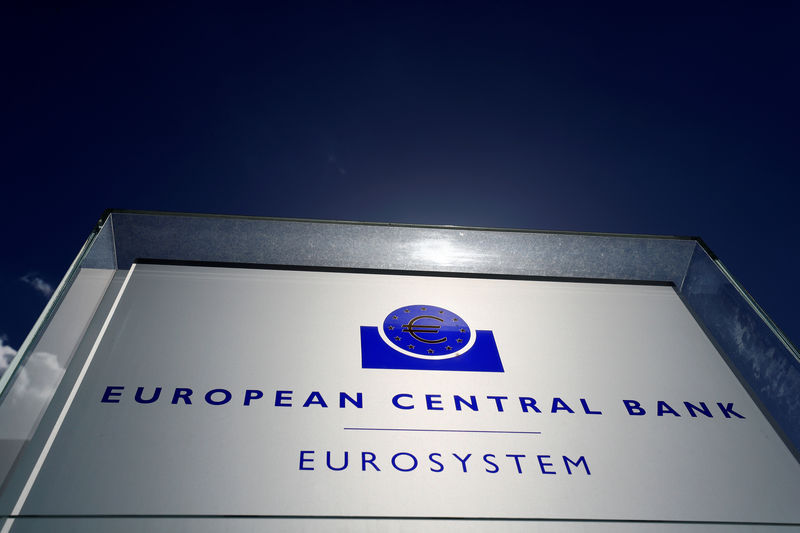 © Reuters. FILE PHOTO: The logo of the European Central Bank (ECB) is pictured outside its headquarters in Frankfurt
© Reuters. FILE PHOTO: The logo of the European Central Bank (ECB) is pictured outside its headquarters in FrankfurtFRANKFURT (Reuters) – The European Central Bank will reassess the outlook for bank lending next month as there is a risk that banks could tighten credit supply and exacerbate the current economic slowdown, its chief economist Peter Praet told German daily Boersen-Zeitung.
His comments, in an interview published on Monday, were likely to cement market expectations for a new round of multi-year ECB loans to banks as existing ones worth around 750 billion euros start maturing next year, creating a cliff-edge for lenders in Italy and other southern European countries.
The euro zone’s economy has continued to slow, raising questions over ECB plans to raise its interest rates sometime after next summer.
“We do need to monitor the transmission of monetary policy through the banking system carefully,” Praet said. “In March we will make an assessment of the current and expected state of bank transmission.”
Praet added the ECB’s Targeted Long-Term Refinancing Operations had been “a very useful tool” and were still part of the ECB’s “toolbox”.
He was the second ECB board member to discuss the prospect of another TLTRO after Benoit Coeure said last week a new round was “possible”.
The chief economist also said in the interview that he expected the ECB’s forecasts to be cut again in March particularly “for the near term” while also stressing some positives, such as growing consumption and employment.
He added, however, that the ECB could push back the timing of its first post-crisis rate hike if need be.
“If the euro area economy were to slow more sharply, we could adapt our forward guidance on interest rates and this could be complemented by other measures,” he said.
Fusion Media or anyone involved with Fusion Media will not accept any liability for loss or damage as a result of reliance on the information including data, quotes, charts and buy/sell signals contained within this website. Please be fully informed regarding the risks and costs associated with trading the financial markets, it is one of the riskiest investment forms possible.
Source: Investing.com





























